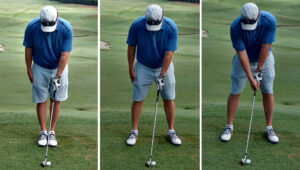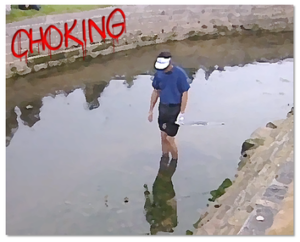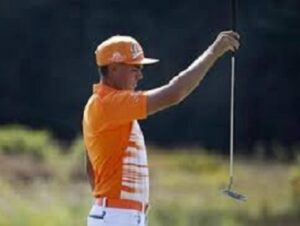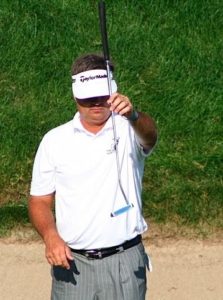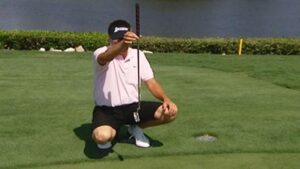Are you pushing or pulling your full swing shots? You may be a right handed golfer with a stronger right arm and that may be causing the major problems with your golf swing. It’s so easy for you to push and power through your swing with your right hand creating an over the top swing. That extra power causes you to swing across your ball from the outside to inside. That’s where your banana slices or duck hooks come from.
You really need to learn to let your leading arm (your left arm for right handed golfer), pull your club through the swing. Here are some tips to help you fix your swing problems:
1/ Light Grip: A light grip allows your arms to relax and release your club at the bottom of your swing.
2/ Looser Grip with your Trailing Hand: To ensure that you let you leading arm take control of your swing, use a leading hand grip pressure at about a 6 out of 10. Even more important, your trailing hand should be gripping with a pressure of 4 out of 10. Long Ball Driving Champions use this rule to create maximum power with their leading arm. Limiting your grip with your trailing hand also limits your chance of turning your club face over at the point of impact and creating duck hook.
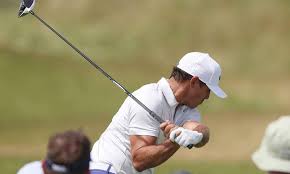
Brooks Koepka is the number 1 ranked golfer in the world so pay attention. He creates a slight loop at the top of his swing to swing up the slot from inside to up his target line.
3/ Loop at the Top: If you are a chronic over the top swinger, make sure that you take a wide takeaway so that you can slightly loop your club at the top to shallow your downswing with lagging wrists from the inside to outside and up the slot (as David Leadbetter describes it).
4/ Your Left Side Starts your Downswing: Most recreational golfers start their downswing by pulling down with their arms and casting their club from the top of their backswing. That KILLS YOUR POWER. Start your downswing with a pressure shift to your the left side (leading side of your body) by allowing your weight to shift to your leading leg as your club reaches the top of your backswing (don’t rush at the top). That weight shift allows your leading hip to start the downswing as you drop your arms down and releasing your wrist through the ball.
5/ Weight shift forward allows you to finish your swing balanced on your leading leg: If you are falling back when you finish your swing, you are not giving yourself the time and the tempo to shift your weight forward at the top of your swing. Let the momentum of your club, changing directions at the top of your backswing, give you the rhythm to press forward with your leading foot and hip to start your downswing.
Remember this sequence and practice to get this feeling as you reach the top of your backswing: weight shift (pulling your leading hip, shoulder & leading arm in sequence) and finally letting your wrist release at the bottom of your swing. If you can’t create a whooshing sound with your club you are not generating the hidden power in your club head.
Practice with your GOLFSTR+ to swing with a straight leading arm. Don’t rush at the top of your swing. Let your lower trunk start your downswing so that you can uncoil from the bottom to the top as you swing from the inside & up your target line. Buy one today at www.golfstr.com



